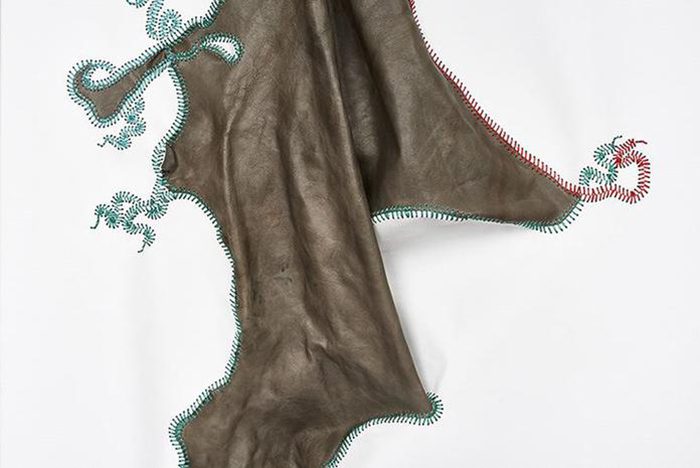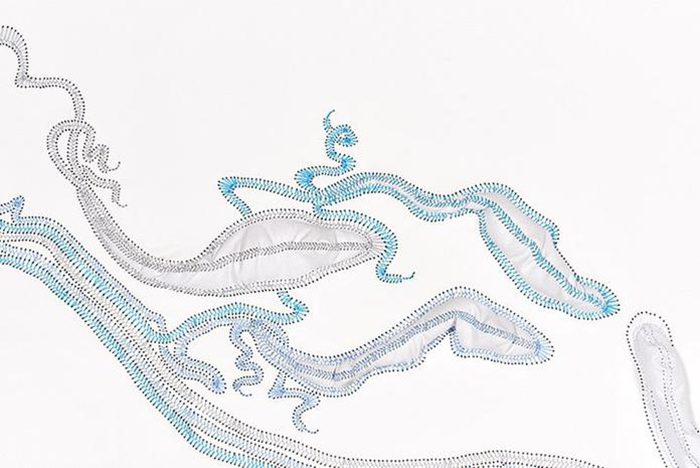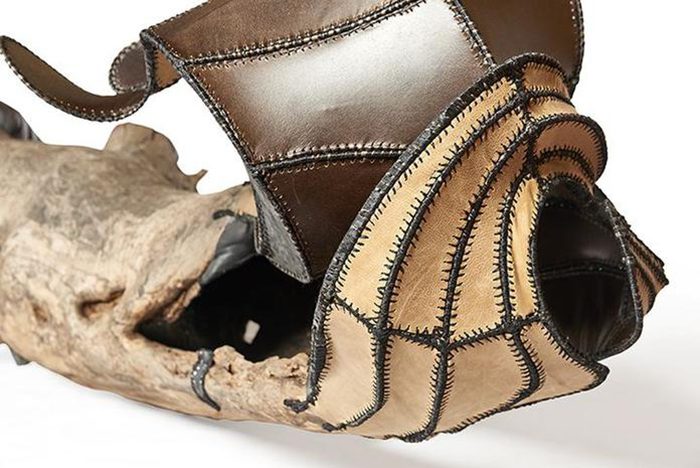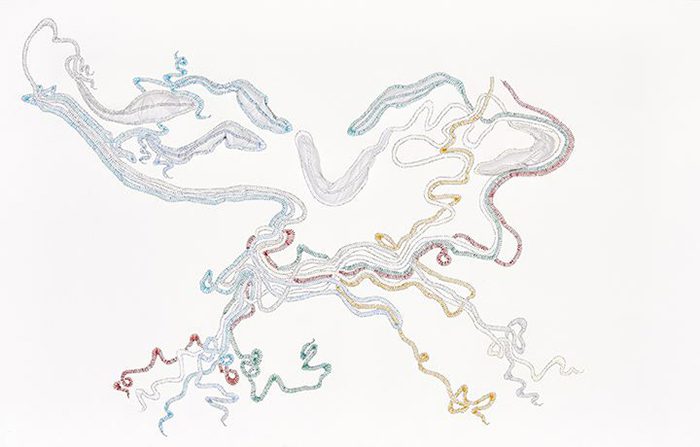ART-PRESENTATION: Nicholas Hlobo
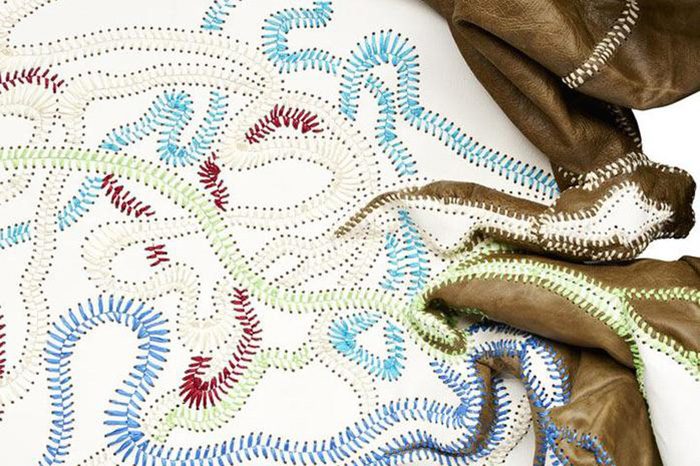 Using materials as metaphor, Nicholas Hlobo blends innovation with tradition, probing with healing, and irreverence with respect. The artist creates works on paper, sculptures, and performances that harness the associative potential of materials, such satin ribbon, rubber inner tubes, leather, lace, and weathered wood. His evocative images and forms play on connotations of gender, ethnicity, and his South African heritage.
Using materials as metaphor, Nicholas Hlobo blends innovation with tradition, probing with healing, and irreverence with respect. The artist creates works on paper, sculptures, and performances that harness the associative potential of materials, such satin ribbon, rubber inner tubes, leather, lace, and weathered wood. His evocative images and forms play on connotations of gender, ethnicity, and his South African heritage.
By Efi Michalarou
Photo: Lehmann Maupin Gallery Archive
The artist draws on his Xhosa heritage in his work, using the language to title each of his pieces and exhibitions and draws inspiration from his own relationship to the culture. In his first solo exhibition in New York, Nicholas Hlobo presents a number of new works inspired by the migratory patterns of eels. “Through my works I attempt to create conversations that explore certain issues within my culture as a South African”, says Nicholas Hlobo “The conversations become a way of questioning people’s perceptions around issues of masculinity, gender, race and ethnicity”. The migratory patterns of eels, is used as a point of departure, and reconsiders as allegory the personal transformation necessary to his own artistic journey. Centered around organic and corporeal imagery, the exhibition elaborates on recurring themes of the artist’s concern with beauty, pain, pleasure, and cycles of life. Cut and stitched together, and woven with leather, the works on canvas (referred to by the artist as paintings) are given greater dimensionality through handmade impressions, which echo the sculptures made of a tree trunk and stump embellished with leather. Hlobo also incorporates found objects into his works. In the work “Umkhokeli”, which roughly translates to “leader” or “master,” he uses a vintage leather flagpole holster, sewn into tentacle-like ribbon embroidery and fashions it with a leather phallus in place of a flag, For the artist, the mating ritual of eels is ripe with metaphor. The animals spend the majority of their solitary lives near the shoreline, but swim thousands of miles to the deep ocean when biologically called to spawn, and, ultimately die after their final progenerative act. It is the eels’ abandonment of familiar territory for the ocean’s unknown depths that resonates with Hlobo; the voyage of the eels is symbolic of the existential notions of transformation in the artist’s personal creative journey that is guided by the subconscious. The belief in artistic instinct is essential to Hlobo, who begins production of any piece free from preconception or planned aesthetic result.
Info: Lehmann Maupin Gallery, 201 Chrystie Street, New York, Duration: 2/2-17/4/16, Days & Hours: Wed-Sun 11:00-18:00, www.lehmannmaupin.com
